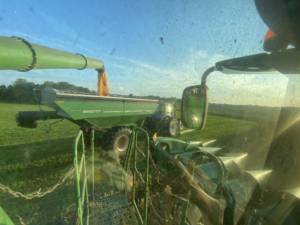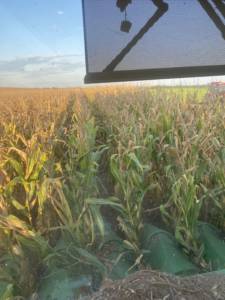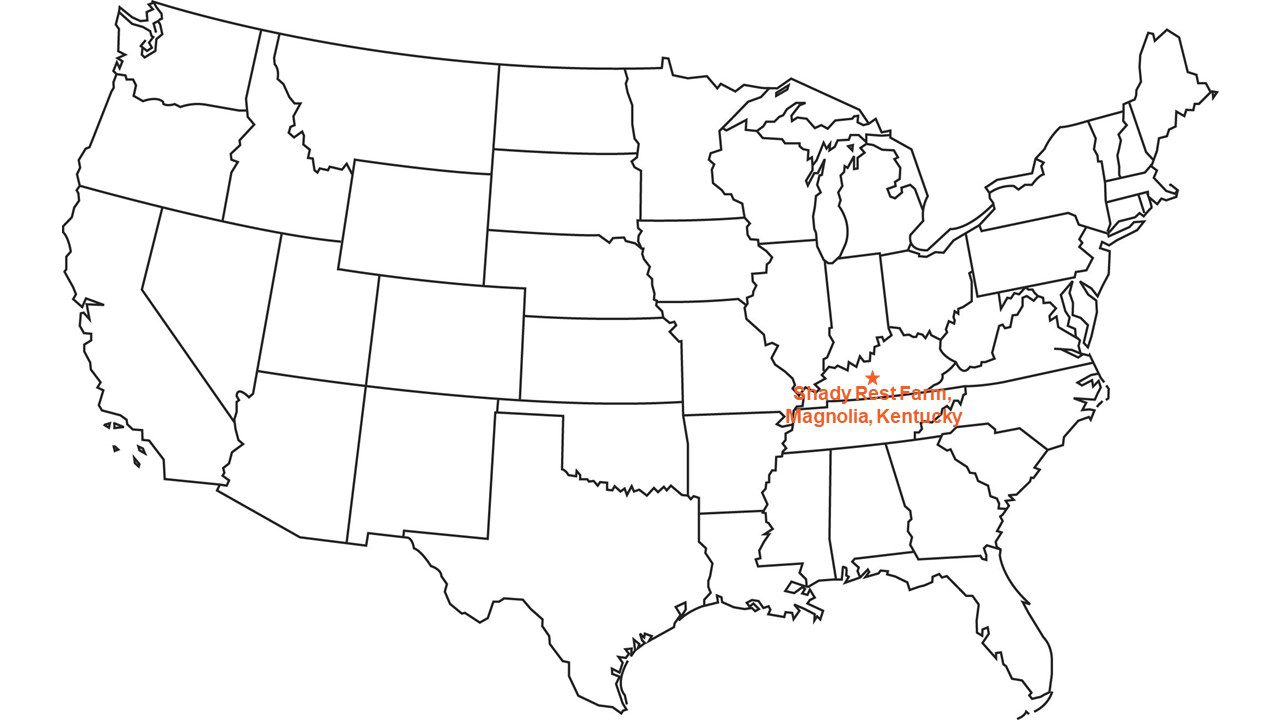 Both our double-crop soybeans and our corn crop are looking really good. The soybeans are nearly finished blooming, and we have just started shelling corn.
Both our double-crop soybeans and our corn crop are looking really good. The soybeans are nearly finished blooming, and we have just started shelling corn.
August was very hot. We focused on getting our equipment ready for harvest, taking care of paperwork, and hauling our wheat to market to clean out storage bins to be ready to store corn.
The crops were getting dry. In late August, we got more than 7.5 cm, or about 3 inches, of rain from the storm system that was hurricane Ida. That storm wasn’t good for a lot of people, and it did a lot of damage. A silver lining, or positive, comes with storms like that, and we benefitted this time. For us, the rain fell slowly, soaked in well, and will help our soybeans fill pods for a strong yield.
Thankfully, along with rain, we’ve gotten a reprieve from the hot, humid temperatures of August. That temperature relief makes our pigs happy, and they continue to do well. But they’ve got to eat. That’s why we have started harvesting corn.
 The corn is drying down slowly. In other words, the moisture held in the corn kernels is evaporating slowly. We usually start harvesting corn the first weekend of September, and this year we are starting at least a week later than average. As we start shelling corn, its moisture is 28%, which is high. We will dry it with our grain handling system to 15%, and then we will store it to feed to our pigs.
The corn is drying down slowly. In other words, the moisture held in the corn kernels is evaporating slowly. We usually start harvesting corn the first weekend of September, and this year we are starting at least a week later than average. As we start shelling corn, its moisture is 28%, which is high. We will dry it with our grain handling system to 15%, and then we will store it to feed to our pigs.
We expect corn harvest to take about 25 working days. I usually drive the combine and harvest between 32 and 40 hectares, or 80 and 100 acres, each day. That keeps our drying system working at capacity.
After the corn is shelled, we plant winter wheat on the majority of those 810 hectares, or 2,000 acres. That wheat will be followed by double-crop soybeans next year. To ensure we have enough corn to feed our pigs, we will plant corn again next year in a few fields, and we will plant cover crops instead of wheat to protect soil health in those fields.
By the time that is done, around mid-October, we expect the soybeans to be ready to harvest. While we harvest corn and plant winter wheat, the soybeans will continue maturing, filling pods and then drying in the field to be ready to harvest.
This field update is funded by the soybean checkoff. To share or republish part or all of this Ground Work 2021 article, please link to the original article and credit www.USSOY.org.

